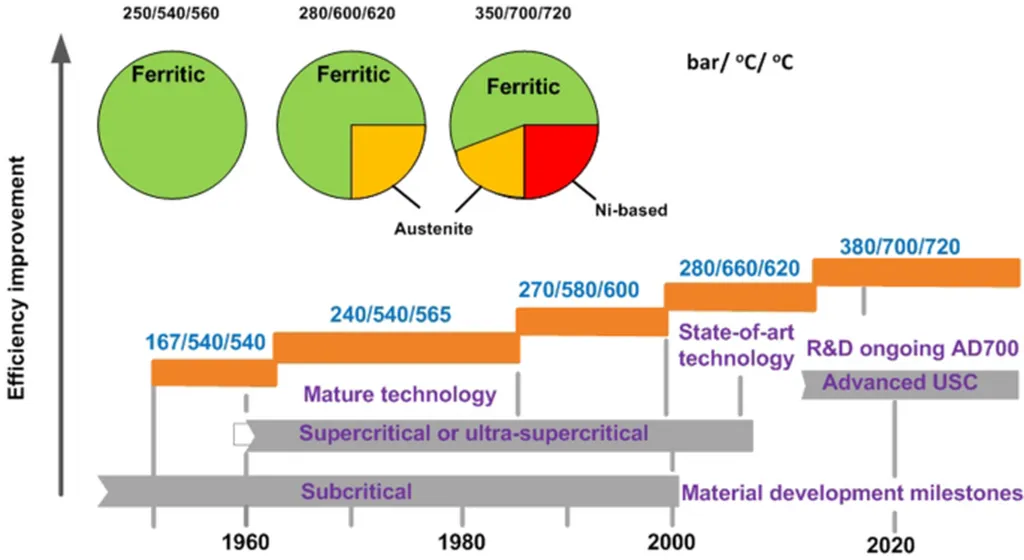In the quest for more efficient and reliable energy production, researchers have been exploring advanced materials that can withstand the extreme conditions of ultra-supercritical steam turbines. A recent study published in *Teshugang* (which translates to *Heat Treatment*) sheds light on the post-forging heat treatment process of 9Cr martensitic heat-resistant steel, a promising material for these high-performance applications. The research, led by Li Hongmei of China First Heavy Industries Co., Ltd., and her team, offers valuable insights that could significantly impact the energy sector.
The study focuses on the large forgings used in ultra-supercritical steam turbine rotors, which are prone to microstructure inheritance—a phenomenon where the original microstructure of the material persists even after heat treatment. This can compromise the material’s mechanical properties and overall performance. To address this issue, the researchers investigated the effects of different austenitization temperatures and isothermal annealing times on the microstructure and mechanical properties of 9Cr martensitic heat-resistant steel.
The findings reveal that the austenitization temperature plays a crucial role in the isothermal transformation of the steel. “We found that controlling the austenitization temperature between 950 ℃ and 1,030 ℃ before isothermal annealing is essential for achieving the desired microstructure,” explains Li Hongmei. The researchers also discovered that isothermal annealing at 720 ℃ can transform the coarse martensitic structure formed after forging into a ferrite+pearlite-like structure, effectively breaking the microstructure inheritance and laying a solid foundation for subsequent quenching and tempering treatments.
The study further explores the impact of holding time at 720 ℃ on the grain size and mechanical properties after quenching and tempering. The results indicate a weak correlation between holding time and grain size, with longer holding times leading to more complete atomic diffusion and a more uniform microstructure. “When annealing at 720 ℃ for 50 to 80 hours, the material exhibited excellent comprehensive performance,” notes Li Hongmei.
The implications of this research are significant for the energy sector. By optimizing the heat treatment process of 9Cr martensitic heat-resistant steel, manufacturers can produce more reliable and efficient turbine rotors, ultimately enhancing the performance of ultra-supercritical steam turbines. This could lead to more efficient power generation, reduced emissions, and lower operating costs for energy providers.
As the demand for clean and efficient energy continues to grow, the development of advanced materials like 9Cr martensitic heat-resistant steel will be crucial. The insights gained from this study provide a theoretical basis and engineering reference for the high-performance heat treatment process design of similar materials, paving the way for future advancements in the field.
In the words of Li Hongmei, “This research not only advances our understanding of 9Cr martensitic heat-resistant steel but also offers practical solutions for improving the performance of ultra-supercritical steam turbines. We hope our findings will contribute to the development of more efficient and sustainable energy technologies.”

